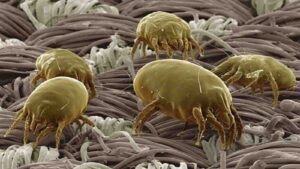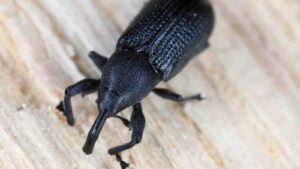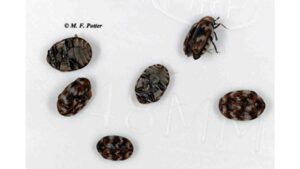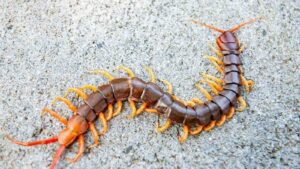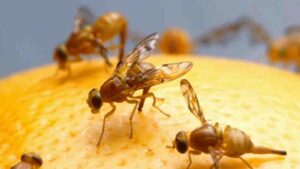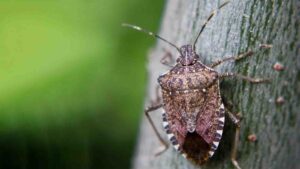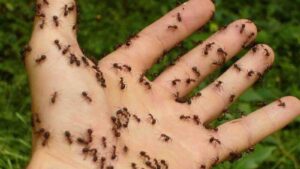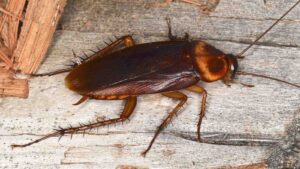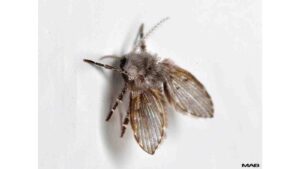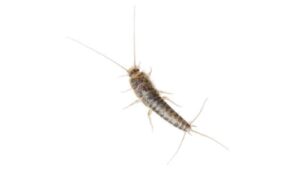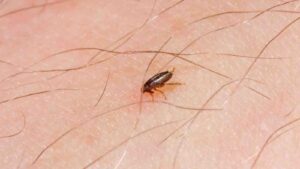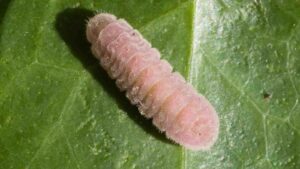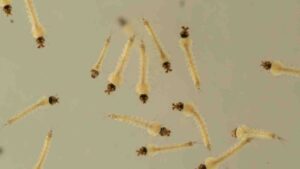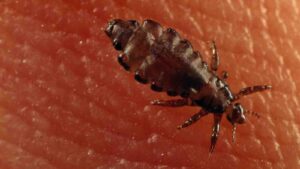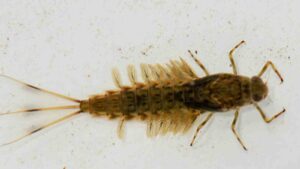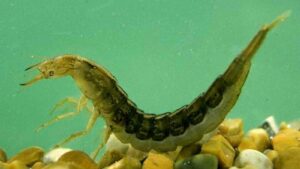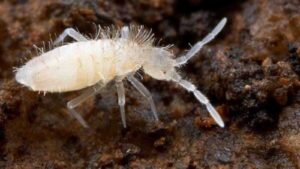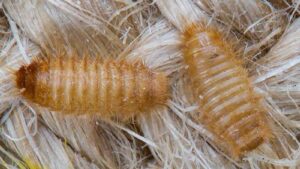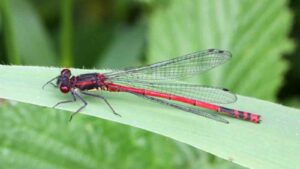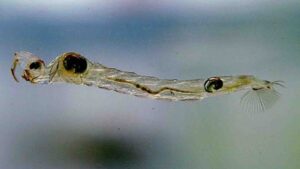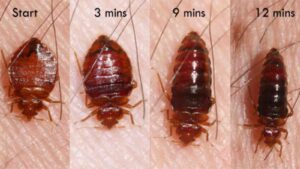Creepy Creatures Hiding Inside Your Bedroom
Summary
Top 20 Creepy Creatures Hiding Inside Your Bedroom. Are you the only living species in your room? I bet you are not. There could be a few creepy creatures living in your bed. They can come from other infested areas […]

Top 20 Creepy Creatures Hiding Inside Your Bedroom. Are you the only living species in your room? I bet you are not. There could be a few creepy creatures living in your bed. They can come from other infested areas or from used furniture.
They can hitch a ride in luggage, purses, backpacks, or other items placed on soft or upholstered surfaces. They can travel between rooms in multi-unit buildings, such as apartment complexes and hotels. Bugs, like all creatures, have their rightful place on this earth. But nobody wants that place to be in their home. Presenting the Top 20 Creepy Creatures Hiking Inside Your Bedroom:
Video: Creepy Creatures Hiding Inside Your Bedroom
Dust Mites
Every house has dust mites. Because they feed off dead skin cells, dust mites can thrive in any plush surface that can hold tastier particles, upholstery, bedding, or kids’ toys. While you can’t completely eliminate mites, you can keep their population down by practicing routine cleaning. Wash bedding in hot water at least once a week, and vacuum carpets and furniture regularly. To remove dust mites from plush toys you’d rather not wash, look to your freezer. Seal the items in a ziplock bag, and place the bag in the freezer for at least 48 hours—dust mites won’t survive in the deep freeze.
Weevils
Weevils usually live in your house by hitching a ride in your groceries. Adult weevils burrow into the rice and other grains to lay their eggs, so you may not know you’ve brought home pests until they hatch and crawl all over your pantry! The fastest remedy for an infestation? Purge. Get rid of any unsealed dry foods, including flour, cornmeal, oats, rice, pasta, and prepackaged items that don’t have sealed pouches inside. Then, throw away all the boxes of sealed items like soup mixes or gelatin. Even if weevils don’t eat these items, they could enter the boxes to hide, only to reemerge later to contaminate your food.
Video: Creepy Creatures Hiding Inside Your Bedroom
Carpet Beetles
An adult carpet beetle won’t cause your home any harm. Unfortunately, the same cannot be said of their larvae. This disgusting larvae thing is living in your bedroom and can eat holes in rugs, curtains, upholstery, clothing, and books. You may not even know you have an infestation until you notice the damage the pests have already caused. If you spot something suspicious, roll up your sleeves and clean. Thoroughly dust and vacuum to remove dust bunnies and cobwebs that shelter these pests. Then, remove clothes from your closet and storage bins, and wash everything or send it to the dry cleaners. Finally, treat your rugs with an insecticide, boric acid, or diatomaceous earth to kill any larvae that remain.
Centipedes
These scary creatures are actually one of the good guys. They don’t destroy your home or contaminate your pantry, but instead feast on the bad bugs like termites, moths, and roaches. But if you just can’t stomach coexisting with these many-legged neighbors, trap them or spray an insecticide around baseboards, doors, and windows. Meanwhile, prevent a future infestation by removing brush and debris from the perimeter of the house and sealing up cracks and crevices where they could enter your home. Centipedes thrive in moist environments, so you may want to invest in a dehumidifier as well.
Fruit Flies
You may notice one fly buzzing around your fruit in the morning, then come home from work to see half a dozen more. Fruit fly larvae hatch just 24 hours after the eggs are laid, so you’ll want to act fast to take them out. Cut off their food supply by storing soft fruits in the refrigerator. Also, immediately wipe down cutting boards and counters after food prep, and empty your garbage and recycling cans daily. If, in spite of these preventive measures, you spot a few fruit flies, create a simple DIY trap by filling a small tumbler halfway with apple cider vinegar. Then, add a tablespoon of dishwashing liquid, and fill the glass the rest of the way with warm water. The flies will fly into the tumbler, but they won’t fly out.
Stinkbugs
Stinkbugs, one nasty creature, generally live and breed outdoors, but when the temperatures get cooler, they often sneak indoors to hibernate. If you see these shield-shaped bugs in your house, don’t try to swat or squash them. When disturbed, stinkbugs live up to their name by emitting a foul odor that only attracts more stinkbugs. Try eliminating these bugs by vacuuming them.
Ants
These creepy crawlies are tiny but relentless home invaders. They enter your home in search of food, water, and shelter, which means your kitchen and bathroom are their prime targets. While baited traps are very effective at eliminating ants, they’re not completely safe to use in small areas that children or pets can access. If you’d rather not use traditional poisons, there are a number of natural remedies you can try. Once you’ve managed to banish these pests, discourage them from returning by vacuuming regularly, wiping down surfaces every day to remove the scent of their trails, and taking out the trash every day.
Cockroaches
Cockroaches inside the bedroom are a problem all over the world. Once they’ve moved in, cockroaches are difficult to dislodge, so take strong, swift, and sustained action. Lay down insecticide or roach traps under the sink, behind the toilet, alongside the fridge, or in other places where they may lurk. Take preventive measures to make your home less attractive. Eliminate their food sources by cleaning up immediately after meals, storing your food in sealed packages, and taking out the trash daily.
Drain Flies
The reason you’ll find drain flies inside your sink or shower drains is that they feed on and lay eggs in the decomposing gunk that lines slow or clogged drains. Use a pipe snake or a pipe brush to scrub away the built-up slime, then open the P-trap underneath the sink to remove any remnants of the clog. Close the system again, and finish by pouring an enzyme cleaner down the drain to remove the rest of the residue and any lingering drain fly eggs.
Read More: Scariest River Monsters on the Planet
Silverfish
The shimmery and slithering silverfish is one bug you never want to see indoors. This pest will feast on fabric, paper, glue, and cardboard boxes. Silverfish are survivors—they even predate the dinosaurs—so it’s a challenge to get them out of your home once they’re there. You can, however, get rid of them with traps, insecticides, or a natural substance like boric acid or diatomaceous earth.
Human flea
This living creature in your bed sucks up its blood meal by driving its piercing mouthparts, seen here in pink, into a capillary. An anticoagulant in its saliva stops clots forming. Employ a steam cleaner for carpets and upholstery, including pet beds, and you can also wash all bedding, including your pet’s, in hot water to avoid human flea.
Common blue butterfly larva
This less scary, almost cute caterpillar will spend most of its life eating before transforming into a common blue butterfly. It recruits ants for protection by secreting nutrient-rich substances, on which the ants feed. The most widespread of the blue butterflies, it is found in a variety of habitats, including heathland, woodland rides, grassy meadows, parks, large gardens, and waste ground.
Mosquito larva
When it grows up, this larva may help to spread dengue fever, Zika virus, and Chikungunya. But when it’s a baby, it feeds on algae and other microscopic organisms. It spends most of its time at the water’s surface before pupating into an adult. To get rid of mosquito larvae, simply put some dish soap or shampoo into standing water. A single milliliter of soap in a gallon of water will kill most larvae in a day.
Head louse
If this doesn’t make your head itch, nothing will. This creature suckers small blood meals from the scalp, causing the intense itchiness associated with infestations. Strong arms with sticky grappling hooks mean the stubborn creatures can hold on tight. This remedy is easy! Remove dead or live lice with a fine-toothed comb 8 to 12 hours after treatment. Avoid using regular shampoo one to two days after. Continue checking for two to three weeks for nits and lice. Soak combs and brushes in boiling water for 5 to 10 minutes.
Mayfly larva
Also known as nymphs, they live in freshwater and breathe through gills. Compound eyes are shown in black, just behind the antennae. Easily, you can get rid of this creepy creature just by removing any standing water around your home to make the area less attractive to females looking for somewhere to drop their eggs. The odor of garlic has been shown to be effective in repelling mayflies. You can make a repellent spray yourself that can be applied around your home to help keep them away.
Diving beetle larva
This four-eyed alien-like face, belonging to the larva of a water-dwelling beetle, can be the last thing a tadpole sees before it’s snapped up and eaten. Diving beetles undergo complete metamorphosis. Their life cycle includes four stages: egg, larva, pupa, and adult. Most species produce one generation per year. Some live up to 2–3 years as adults.
Springtail
This six-legged “living fossil” has internal mouthparts so is not considered an insect. It feeds on decaying organic matter, and if it runs into a predator, it can flick its tail downwards to propel them away, hence the name. Wiping down the infected area with the vinegar will kill this insect by burning them. Furthermore, cider vinegar is an antifungal, which makes it an effective mold treatment, too. Diatomaceous earth is also a natural product that can be used to rid your home of springtails.
Brown carpet beetle larva
Looking like a miniature buffalo, a carpet beetle larva grazes on textiles such as wool, carpets, skins, and furs. It’s a pest of homes and museums, where it uses its horn-like antenna to navigate around looking for food. A thorough vacuum is the best and quickest way to remove carpet beetles and larvae from your carpeting. Focus on the source and the most infested areas, but vacuum your whole home to make sure you remove all beetles.
Large red damselfly
This scary creature has two gigantic eyes that caught on camera. This gives it a fantastic vision to spot prey, predators, and, in the case of males, rival damselflies. If you have a garden pond, look out for the large red damselfly resting at the water’s edge. As the name suggests, males are bright red with a black thorax, but females may be almost entirely black.
Phantom midge larva
These larvae use their whiskery mouthparts to capture and kill prey and direct it straight into their mouth. This creepy creature has a transparent body that caught on camera. They dwell in deeper water and sediments with low oxygen to escape predation. There are few steps to say bye to this larva. Set up biting insect CO2 traps to draw the insects away and kill them. Install small-mesh screens in windows to prevent their entry. Use air conditioning to keep mice from entering buildings. Apply insect repellent to drive them away.
Read More: Things Most Humans Can’t Do
Bed Bugs
This is the most dangerous creature in the world. If you are infected with this creature, it is very hard to get rid of it. These tiny pests have a taste for human blood that draws them into dwellings. They hide in mattresses, bed frames, bedding, furniture, carpets, baseboards, and bedroom clutter. If you already have a bed bug infestation in your home, follow this guide for how to get rid of it. Or learn how to prevent an infestation before it starts. To prevent bed bugs, clean rooms, wipe out bedbug homes, and discourage their spread. Vacuum multiple times each week as you fend off the pests. Wash and dry your clothes at the hottest setting to kill any bed bugs. Apply caulk to cracks and crevices seen in walls and door frames. Contact a pest control specialist if signs of infestation continue.
Have you ever experienced any of these above creepy creatures hiding inside your bedroom? Love to see your comment below.
